Electrostatic Ecology
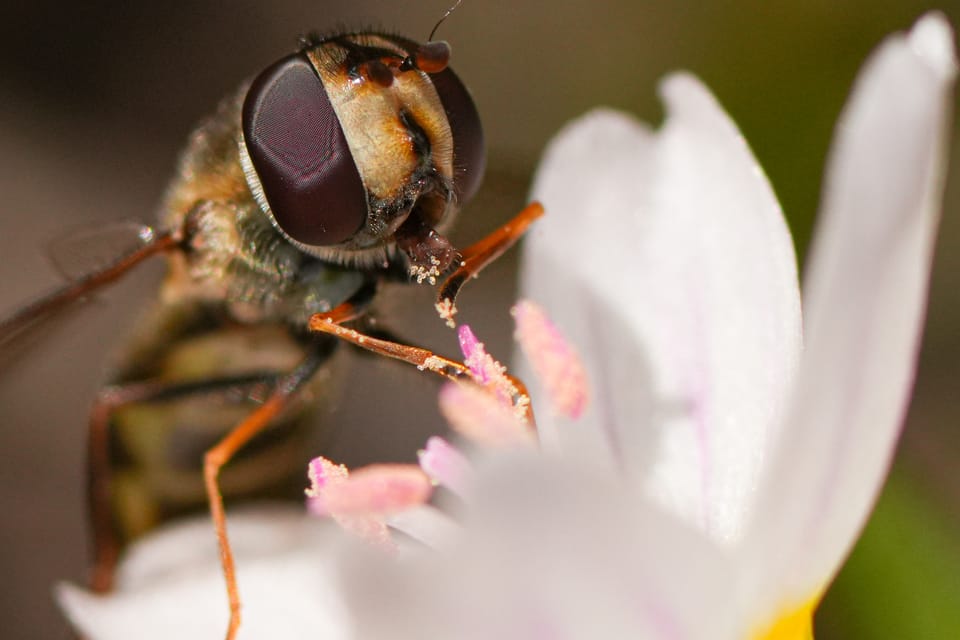
What happens when you're an electric body living in an electric field?
You know that feeling of walking across a carpet and getting a jolt of electricity when you touch a door knob or another person? This occurs because, as you walk across a carpet, you pick up electrons through frictional electricity, which means you build up a charge and then create a spark when you touch an object with an opposite charge.
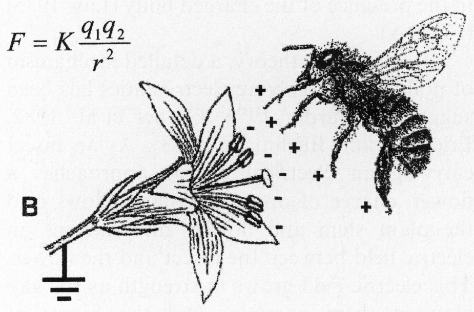
But did you know that airborne insects experience the same phenomenon as they fly and encounter friction with the air? By the time an insect reaches a flower, it has accumulated a strong positive charge, but the flower has a negative charge because it is grounded in the earth.
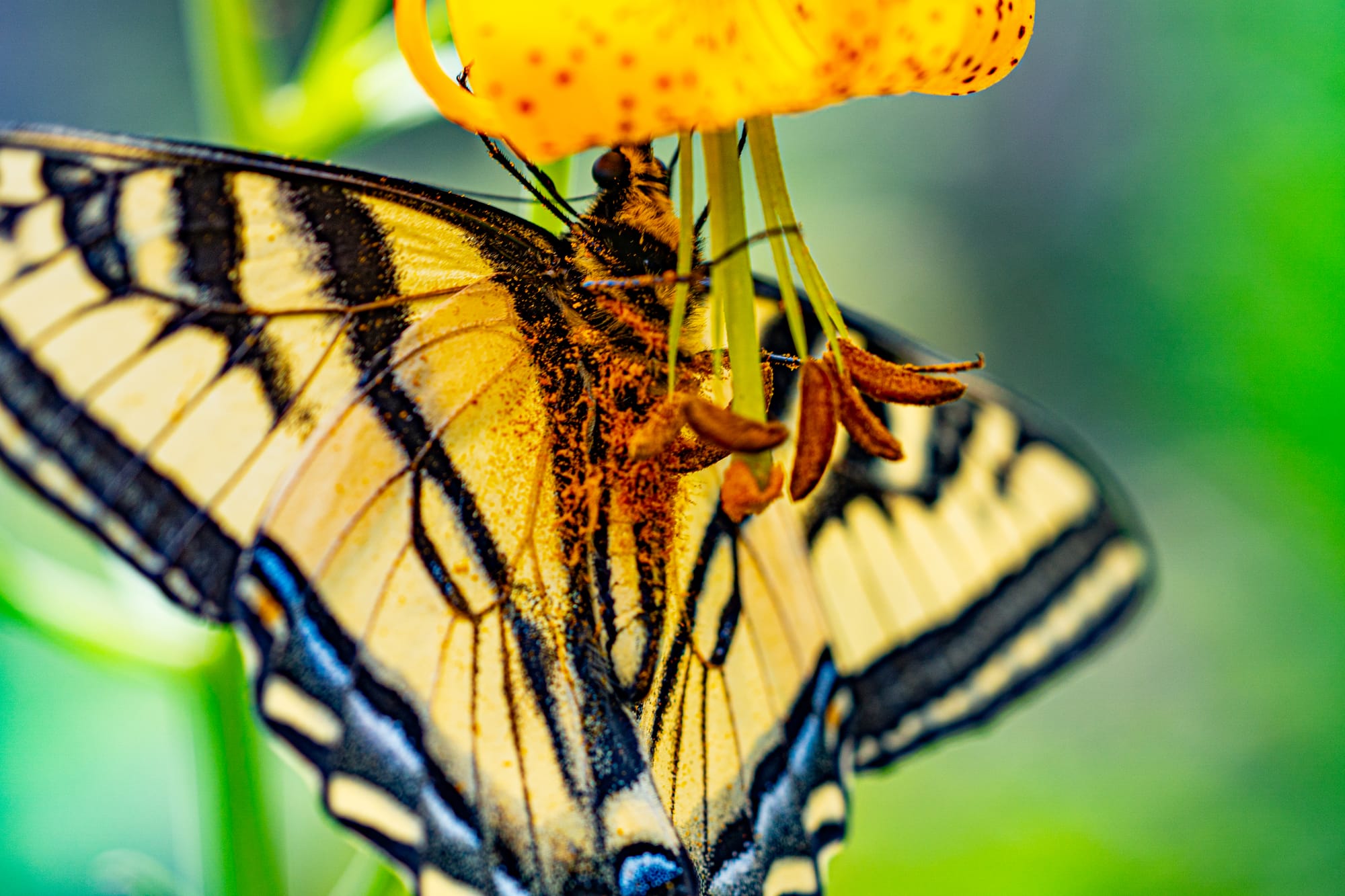

These opposite charges result in pollen grains literally "jumping" millimeters or even centimeters across the gap and sticking to an insect, even if the insect doesn't touch the flower. And when the insect visits a new flower, these pollen grains can then jump from the insect onto the new flower (where they preferentially stick to the flower's receptive stigma, which protrudes higher than the other parts of a flower).

At first, I thought this mechanism for transporting pollen sounded like a fun story to share with you, but then I started digging into the topic and discovered that this story goes much, much deeper than I ever imagined.
The reason this is a much bigger story is because every living organism (plant, animal, and microbe) carries an electric charge, and all of us live in a massive electric field powered by interactions between the Earth and its atmosphere. In essence, all life creates and responds to electric charges on some level and scientists are only beginning to scratch the surface in terms of understanding the many ecological roles that electrostatic fields play.

For example, in terms of pollination, scientists are learning that electrostatic fields vary across different across species, anatomical features, lifestyles, and habitats; which means that insects and plants are adaptively evolving in response to how they electrically interact with each other. In fact, insects aren't simply passively detecting the electrostatic fields of flowers, instead they see, respond to, and make decisions based on the unique electrostatic fields of different flowers, including how electric fields change in response to visits from previous pollinators.
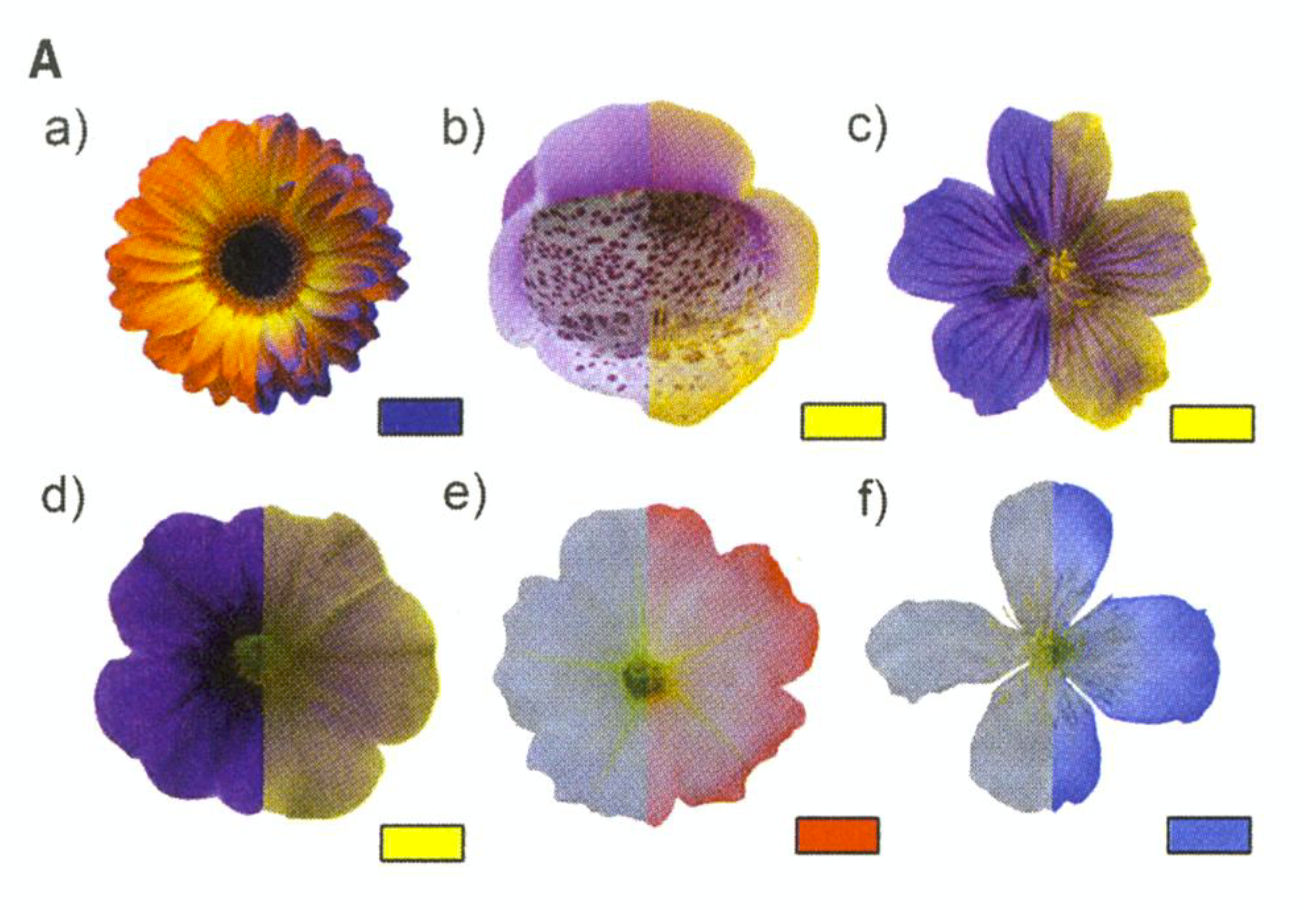
Or imagine a caterpillar crawling along a branch as a predatory wasp approaches. It detects the charged electric field of the wasp as it gets closer and then takes immediate evasive action.
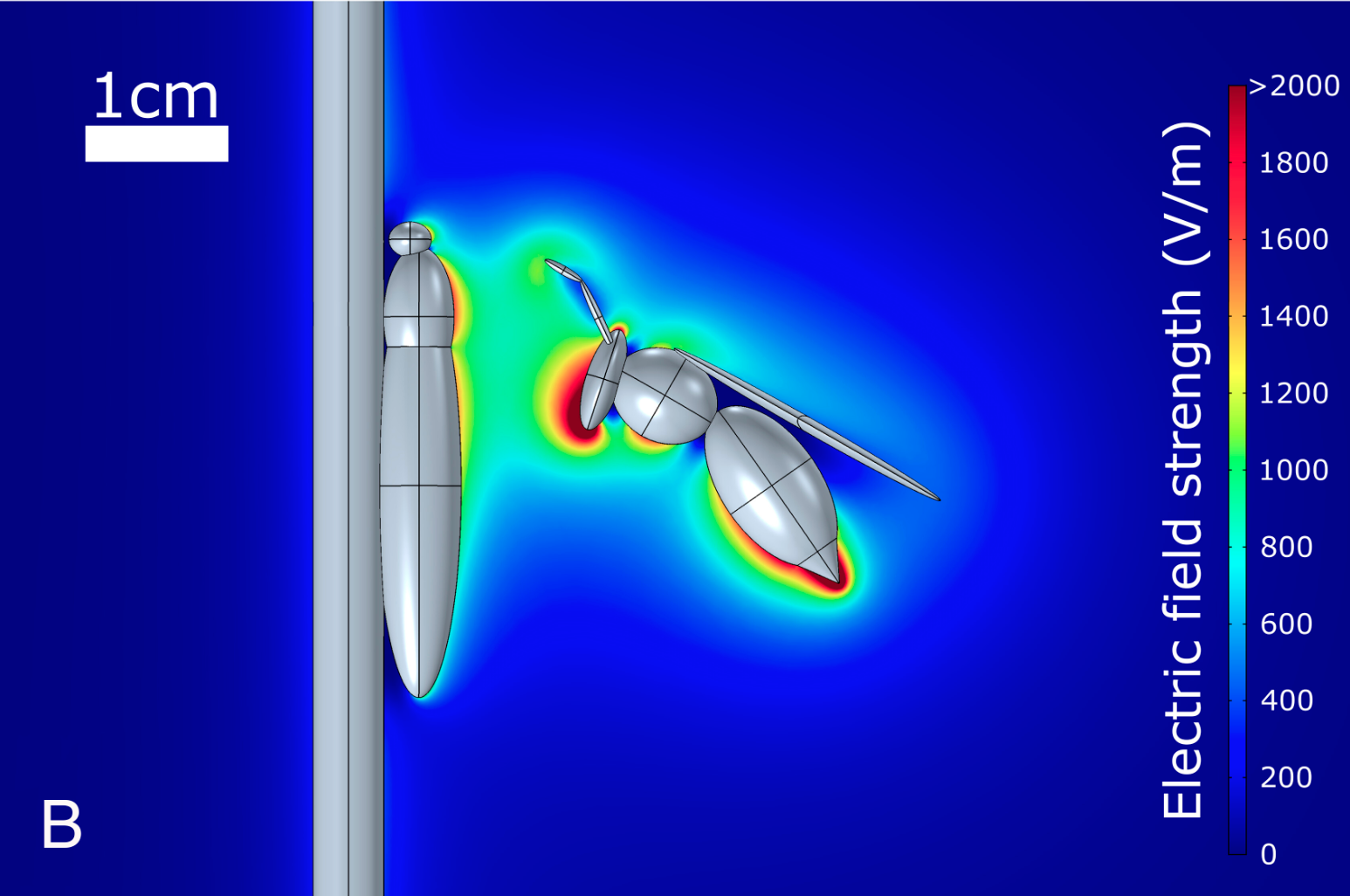
Or consider spiderwebs. As an insect flies near a web, the web bends towards the electrified body of the insect, increasing the likelihood that the insect contacts the sticky web. Webs also attract large quantities of positively-charged airborne pollen and fungal spores that juvenile spiders fed on until they grow large enough to start tackling bigger prey.
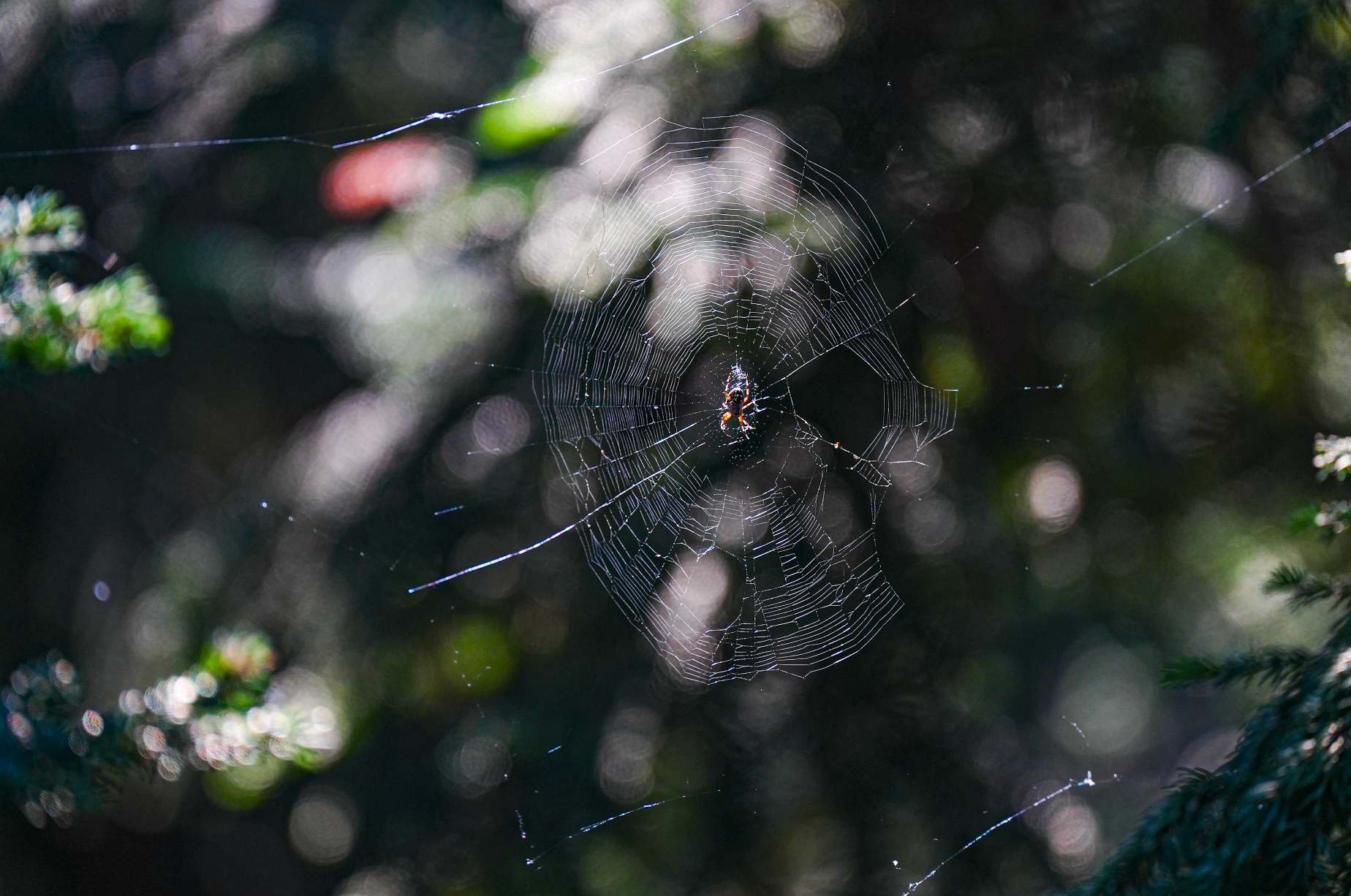
Spiders also rely on the Earth's atmospheric potential gradient, a massive river of ions that flow from the positively charged atmosphere to the negatively charged Earth's surface, when they disperse by ballooning. This gradient varies minute-by-minute based on humidity and weather patterns, and is further impacted by nearby plants, so spiders use these cues to decide when to lift off because in the right conditions the electric gradient can carry them great distances.
Video clip showing how a ballooning spider rises and falls in response to an electric field being turned on and off.
We don't have space in today's newsletter to explore all the ways that electrostatic fields work in the natural world, but I want to leave you with one other amazing thought. Think about the way that lightning rods collect and channel electric energy during a thunderstorm. This effect happens because electric fields become concentrated around sharp points and edges, and the same principle impacts how trees shape the character of electric fields as they tower above the negatively-charged Earth into the positively charged atmosphere.
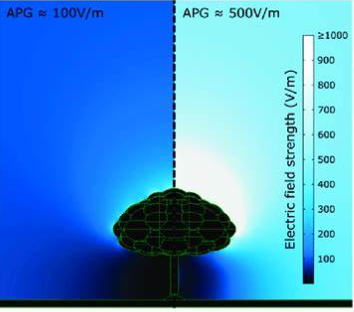
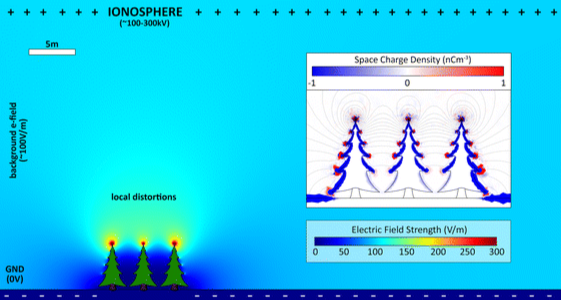
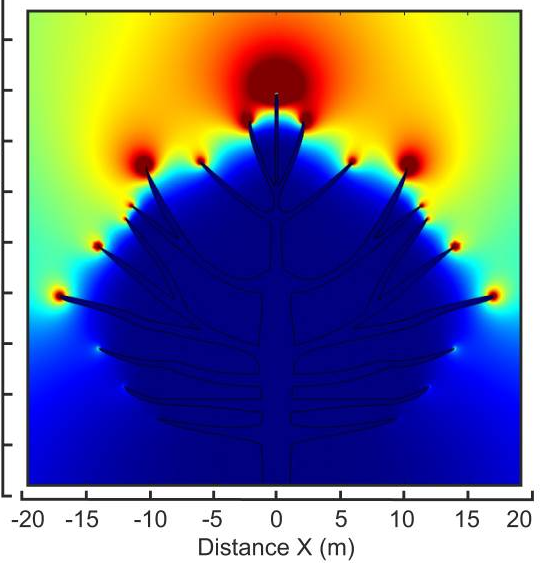

Depictions of electric fields around trees. Images from different sources
Not only do trees create areas with stronger electric charges, they also block the downward flow of charged ions from the atmosphere and create neutral "shade" under their canopies. It's not clear how plants or animals respond to these pockets of higher and lower charges, but given that we're all electric creatures it's clear that trees are shaping ecosystems in ways we've never thought about.
Further Reading

Some scientists now believe that bumblebees "buzz" flowers in order to create an electric charge that pulls pollen out of anthers.

Learn more about pollen here.



Member discussion